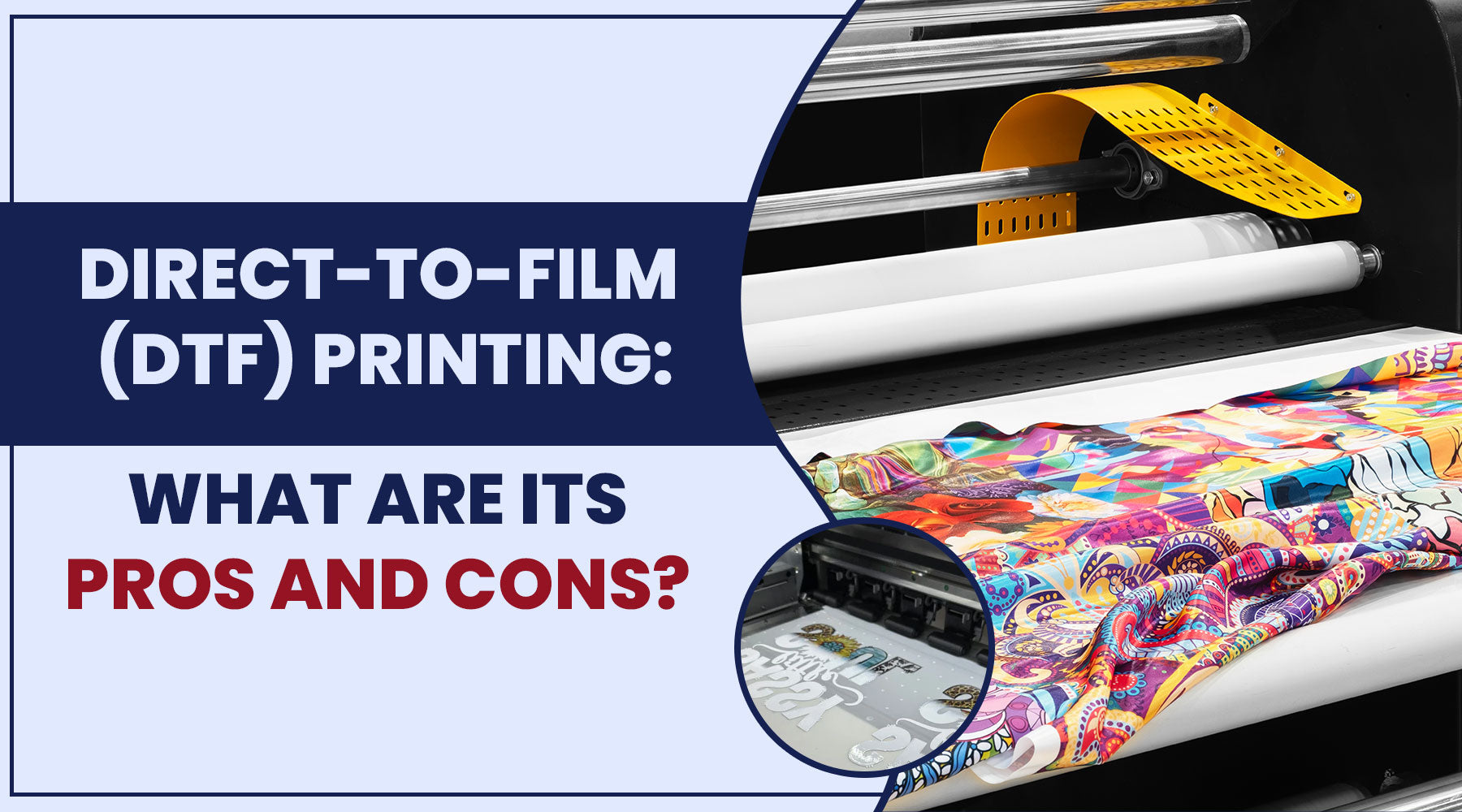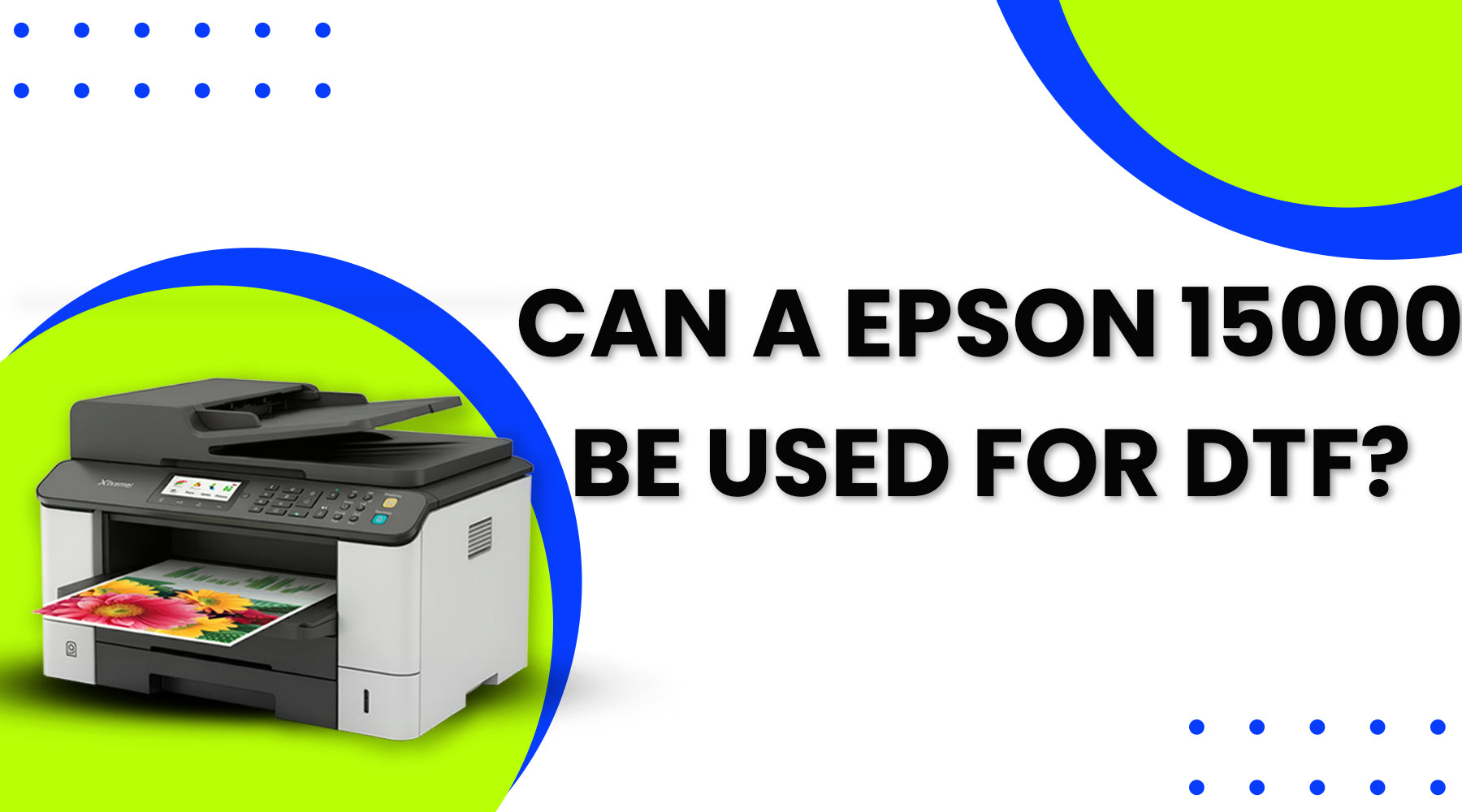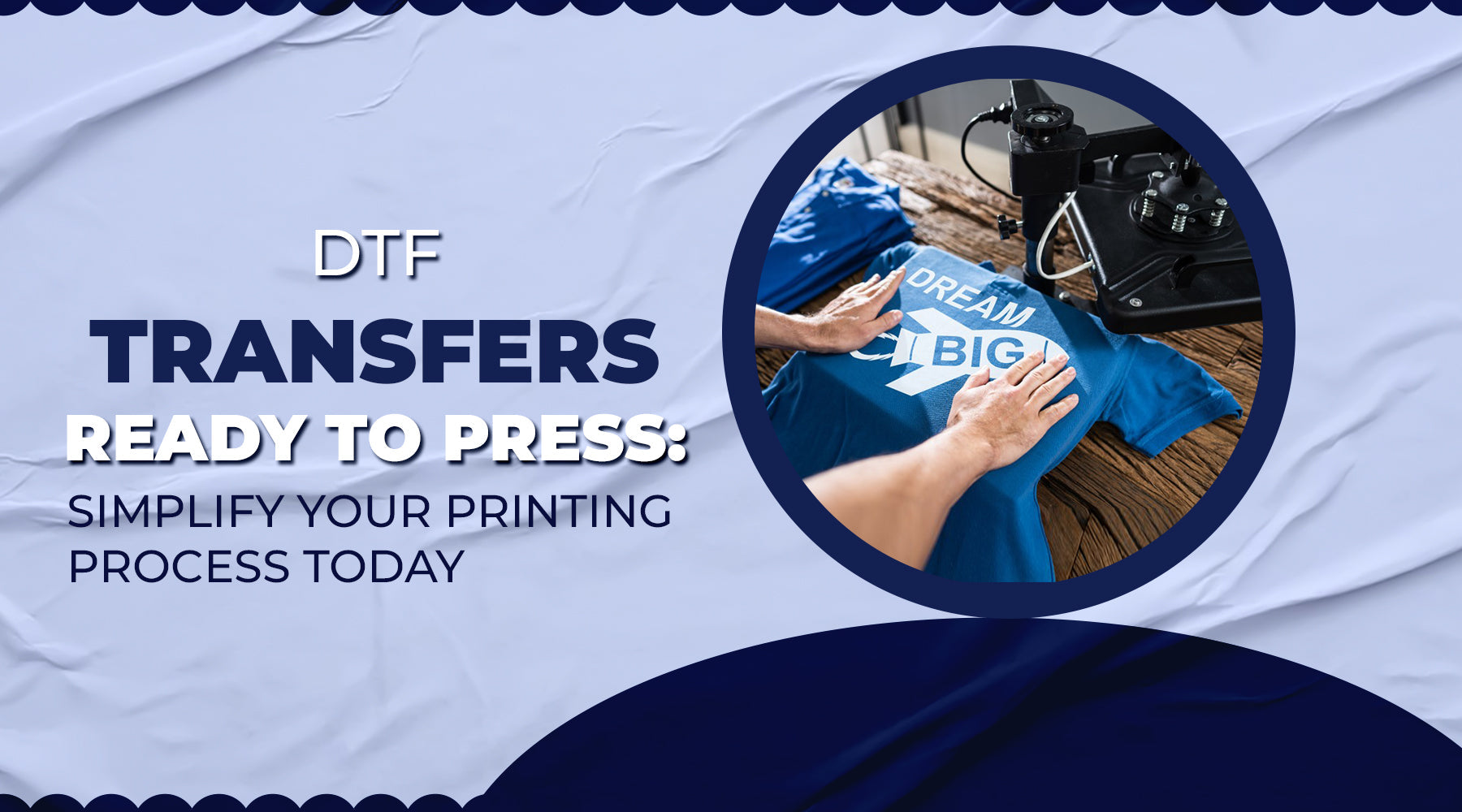Ever met the Picasso of the printing world? No? Then today is your lucky day. In printing technology, DTF or Direct-to-Film printing has emerged as a promising method for bringing countless ideas and designs to life due to its high-quality results.
Whether you’re thinking about joining the DTF printing industry or just getting your ideas printed, this blog is here to serve as your guide, helping you make the best decisions for yourself!
What is Direct-to-Film Printing (DTF)?
Direct-to-Film printing is a printing method that involves printing designs directly onto a PET film (a special film with a coating that helps to transfer designs), which is then transferred onto the desired piece of clothing. This printing technique is widely used in the creation of high-quality prints for various things, such as apparel, signage, and promotional items.
But like everything else, DTF comes with certain advantages and drawbacks.
What are the Pros of Direct-to-Film Printing?
1. Hassle-Free Vibrant High-Quality Prints
In just two steps, DTF printing guarantees vivid, high-quality prints with excellent color reproduction. It is a preferred option for designs with fine lines and gradients because the direct application of ink onto the film produces complex details and sharp images.

2. Versatility
DTF printing is versatile, accommodating various types of substrates, including fabrics, plastics, and metals. It can be applied to 100% cotton and polyester fabrics irrespective of whether the material is dark or light. Because of its flexibility, it's the best option for companies with a wide variety of printing requirements.
3. Durability
The Direct to Film printing method creates long-lasting images that withstand wear and tear, making it suitable for items that experience frequent use or laundering. Typically, you can expect DTF prints to hold up well through 30-50 washes, meeting the ideal industry standard.
Also Read: Most Common DTF Printing Problems - How You Can Solve Them?
4. Fast and Simple Graphics Preparation
DTF printing eases the graphics preparation process. It can easily handle CMYK aka Cyan, Magenta, Yellow, and Key and RGB aka red green and Blue, making it an efficient choice for businesses with tight deadlines.
5. Low Production Costs
One of the significant advantages of DTF printing is its cost-effectiveness, it is much more efficient than ordering online or creating and printing on demand. It incurs lower production cost and hence retailers can sell the products at competitive prices, making it beneficial for businesses seeking higher profits and economic growth.
6. Easy to Learn
In DTF maintenance > learning. DTF printing is relatively easier to learn, reducing the learning curve for operators. But its maintenance can’t be overlooked. This learning accessibility can be particularly beneficial for small businesses or startups looking to adopt efficient printing methods without extensive training.
7. No Setup Costs
Unlike some traditional printing methods that may involve significant setup costs, DTF printing eliminates the need for complex setups. It allows for an infinite number of colors while eliminating all screen setup costs.
8. More Production Options
When it comes to garments , there's no need for any pre-treatment of fabrics. Plus, since the images are printed onto a transfer, the final production doesn't have to be confined to a specific facility.
This adaptability makes it suitable for both large-scale productions and customized, small-batch printing.

What are the Cons of Direct-to-Film Printing?
1. Maintenance
DTF printing equipment requires regular maintenance to ensure optimal performance. Neglecting maintenance tasks can lead to issues such as print quality degradation and increased downtime.
Additionally the rubberized, sticky DTF inks require frequent cleaning and constant use. The largest expense is caused by clogged print heads.
Also Read: 10 Reasons Why You Should Use DTF Transfers for Your Business
2. Fumes & Ventilation Requirements
The use of certain inks releases Polymer in the form of vapor during the DTF process. Effectively managing this involves air filtration, necessitating the use of a specialized fume extractor or ventilation to the outside – often both. Thus in the DTF printing process proper ventilation in the workspace is a necessity.
3. Equipment Costs and Production
Although the production cost of DTF printing can be low, the initial equipment investment can be rather high. Companies should carefully consider the long-term advantages over the initial expenses.
Why Choose DTFNC for DTF Prints?
DTF NC stands out as a reliable choice for DTF printing, offering a range of benefits such as:
- Best quality assurance and durable prints: Even after multiple use the quality remains just brilliant.
- Swift Results: We deliver fast while maintaining the best quality of your products.
- Expertise in handling diverse substrates: DTF NC offers a plethora of experience, particularly with managing diverse substrates. No matter the material—fabrics, leather, or glass—the DTF NC team has the expertise to guarantee that your prints look amazing.
Despite some cons, Direct-to-Film (DTF) printing presents a compelling option for businesses seeking a versatile, cost-effective, and efficient printing solution. And when considering DTF printing, DTF NC is your right place to visit.








